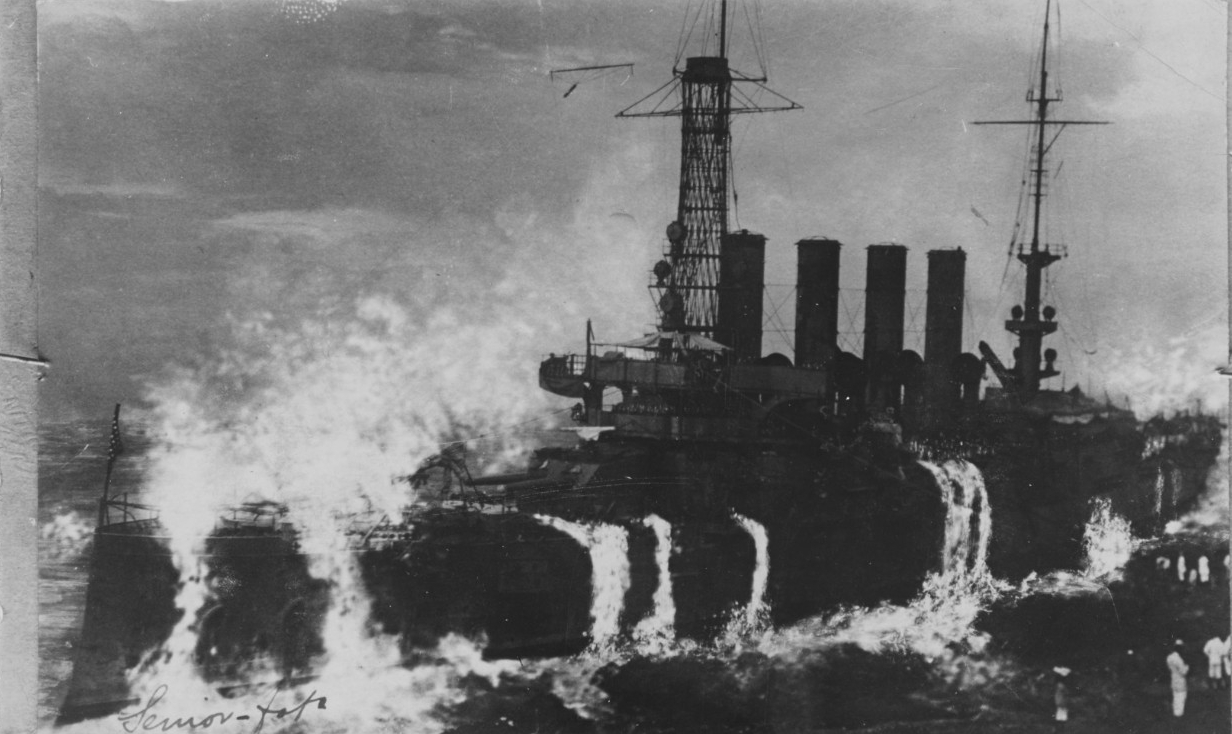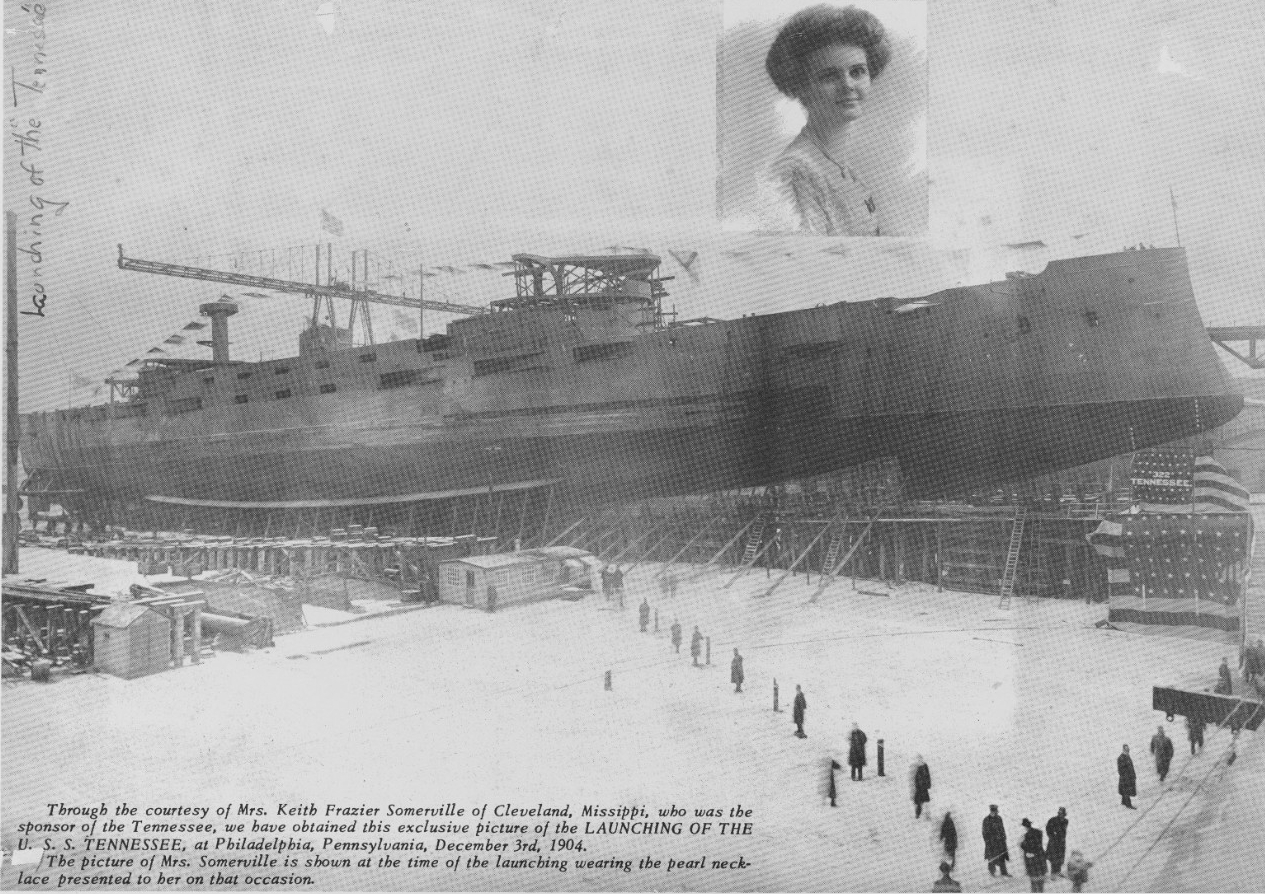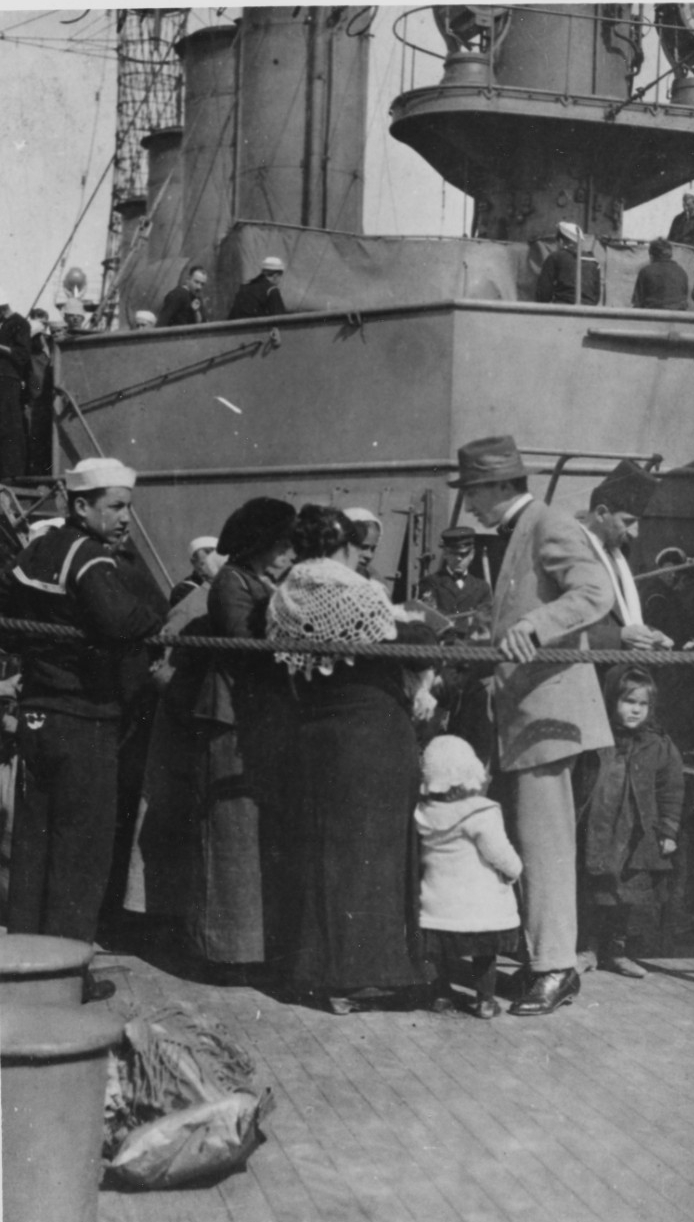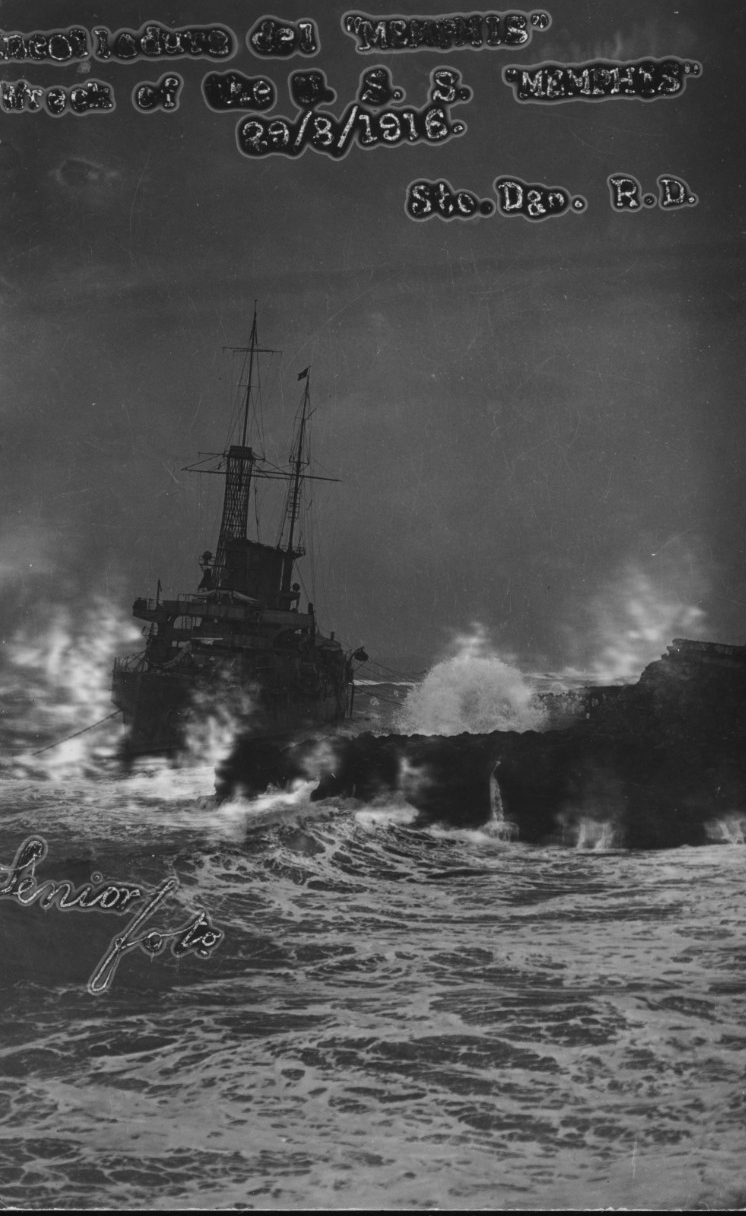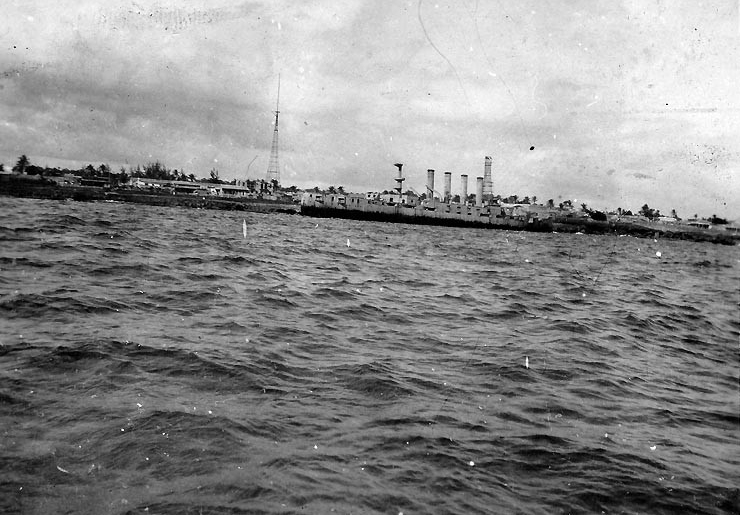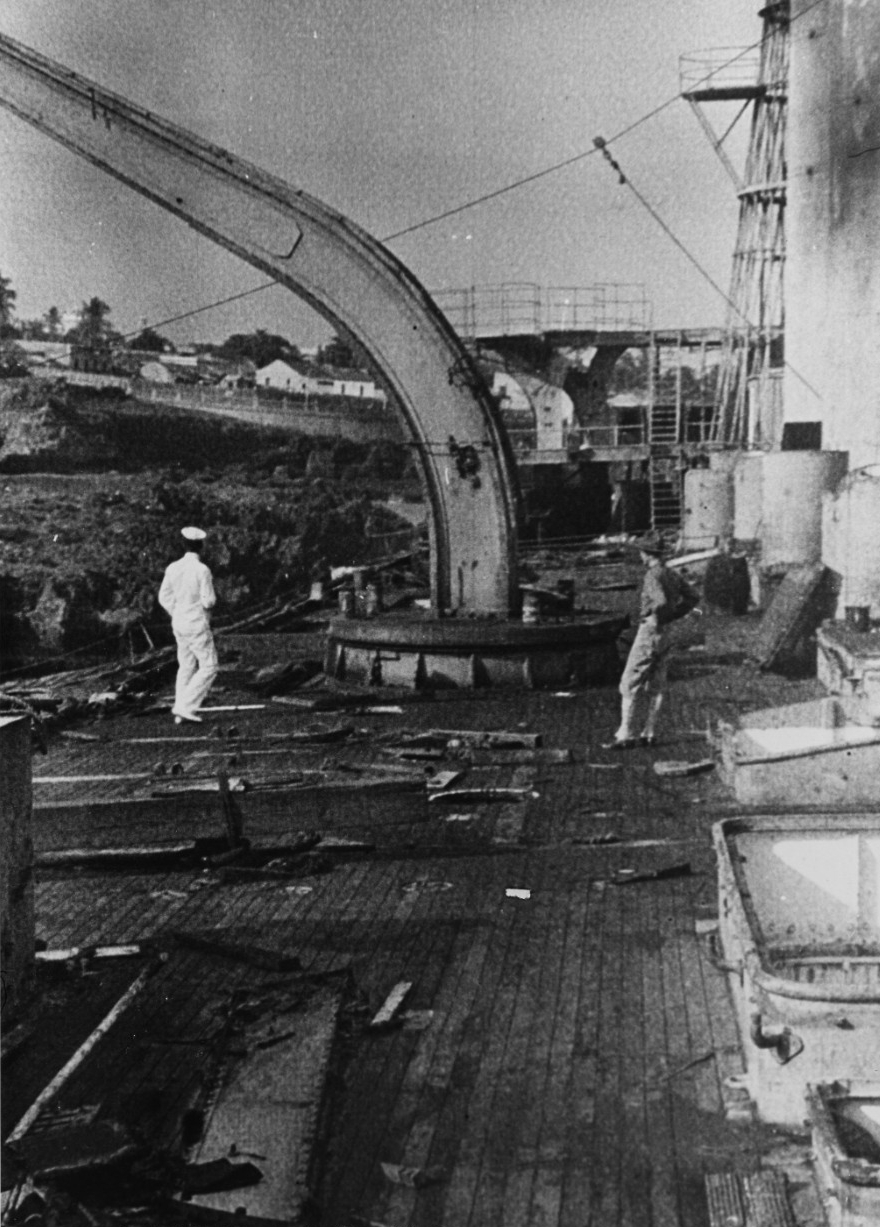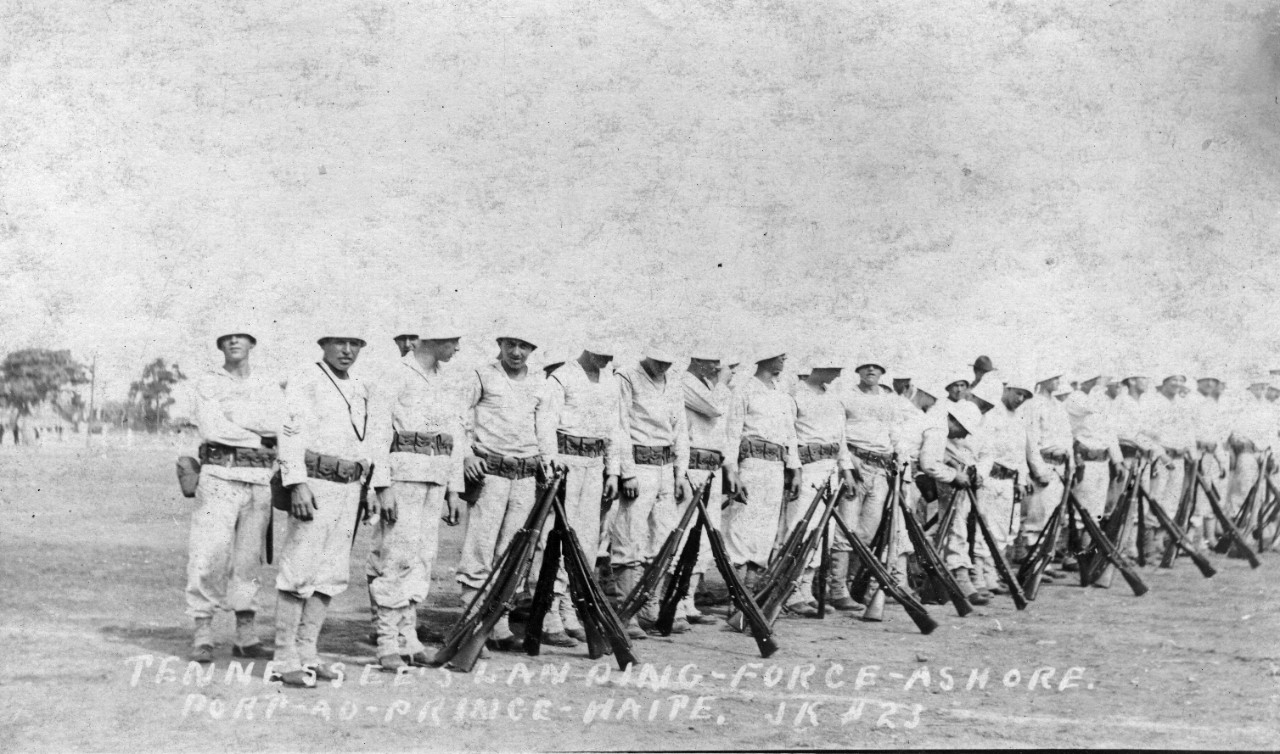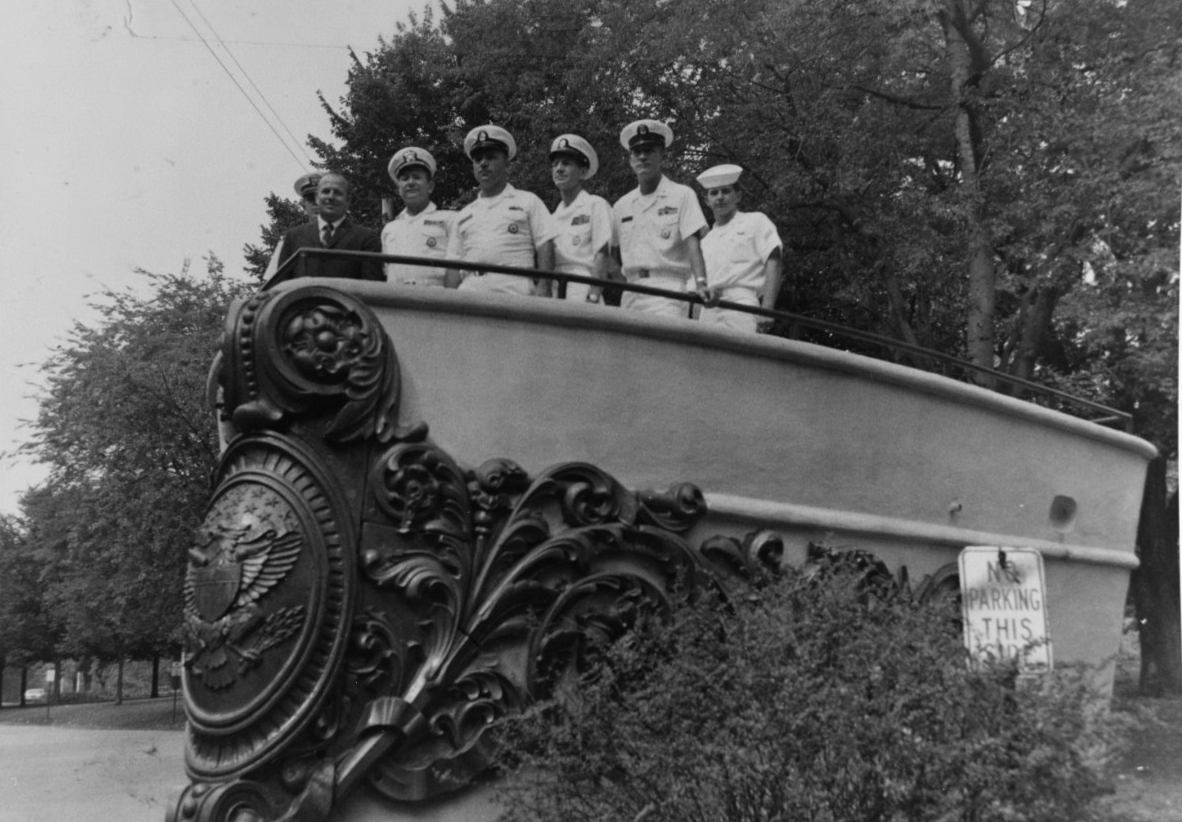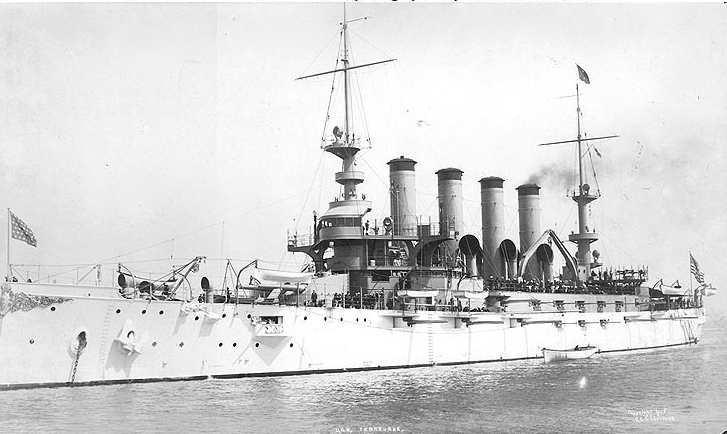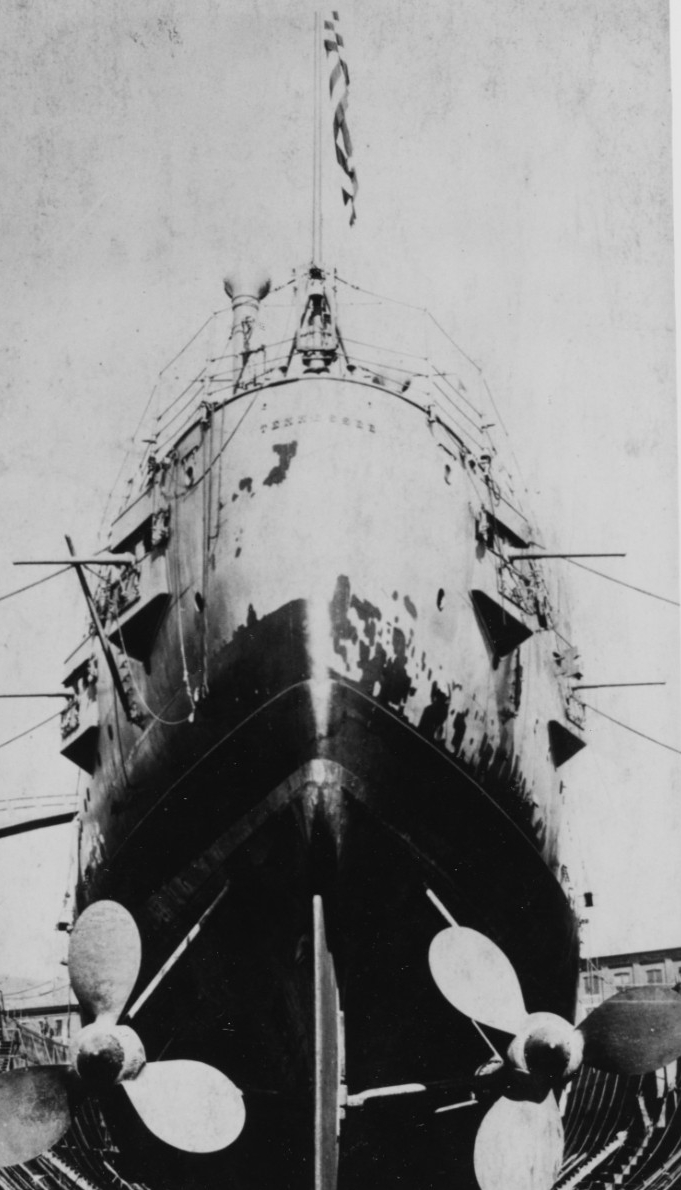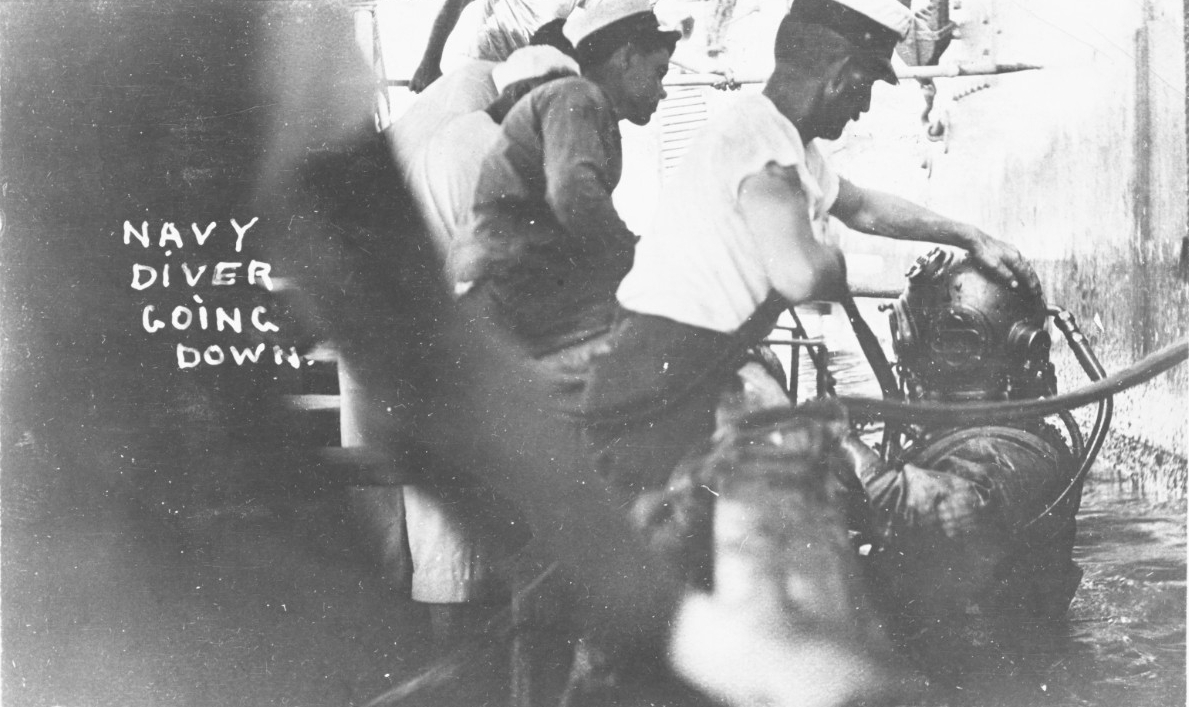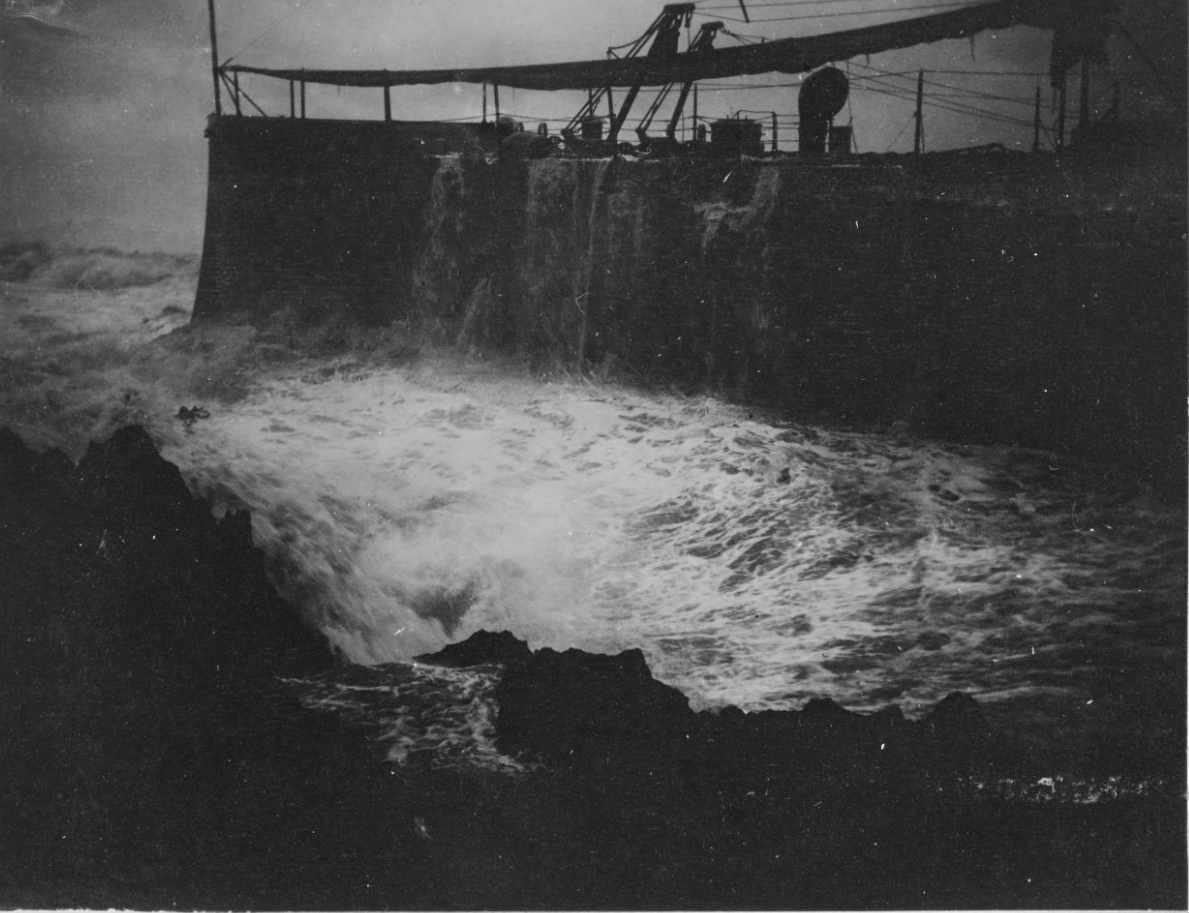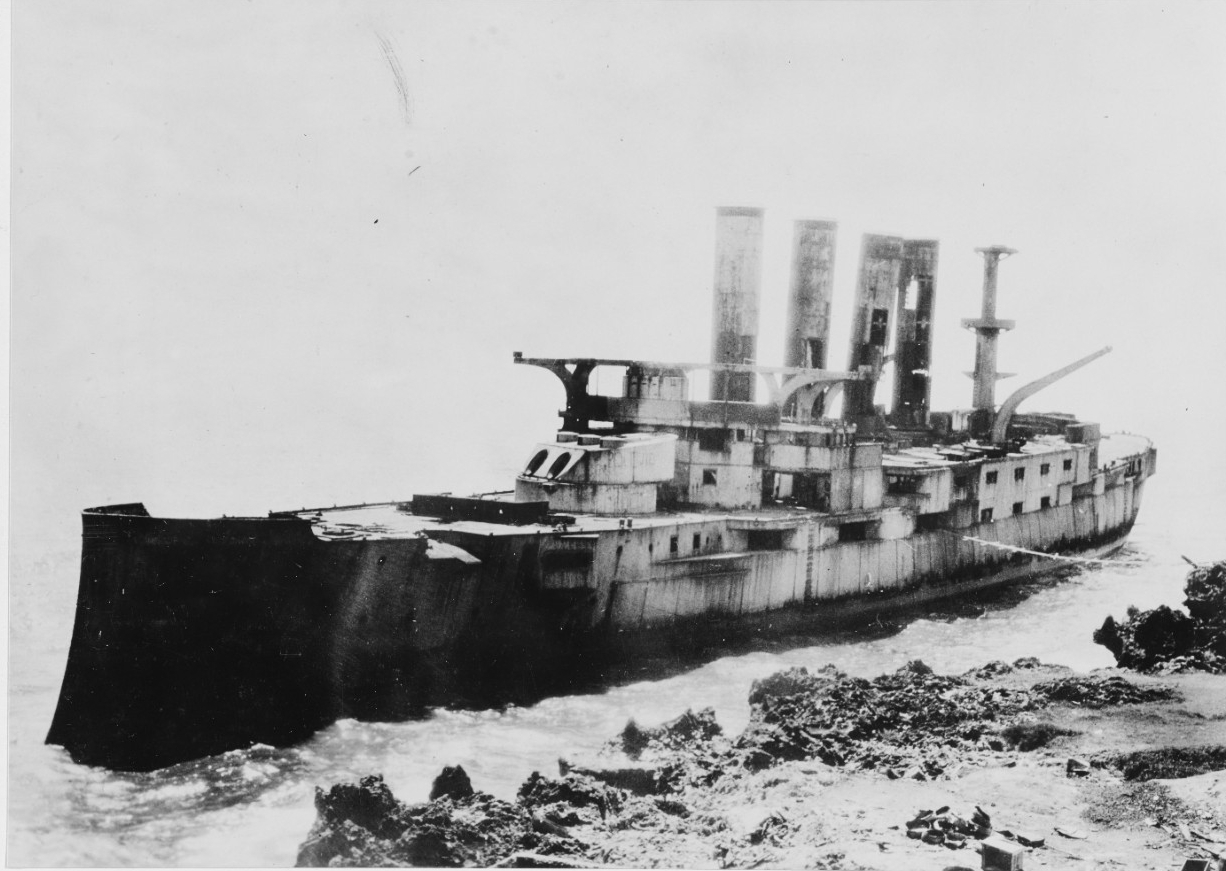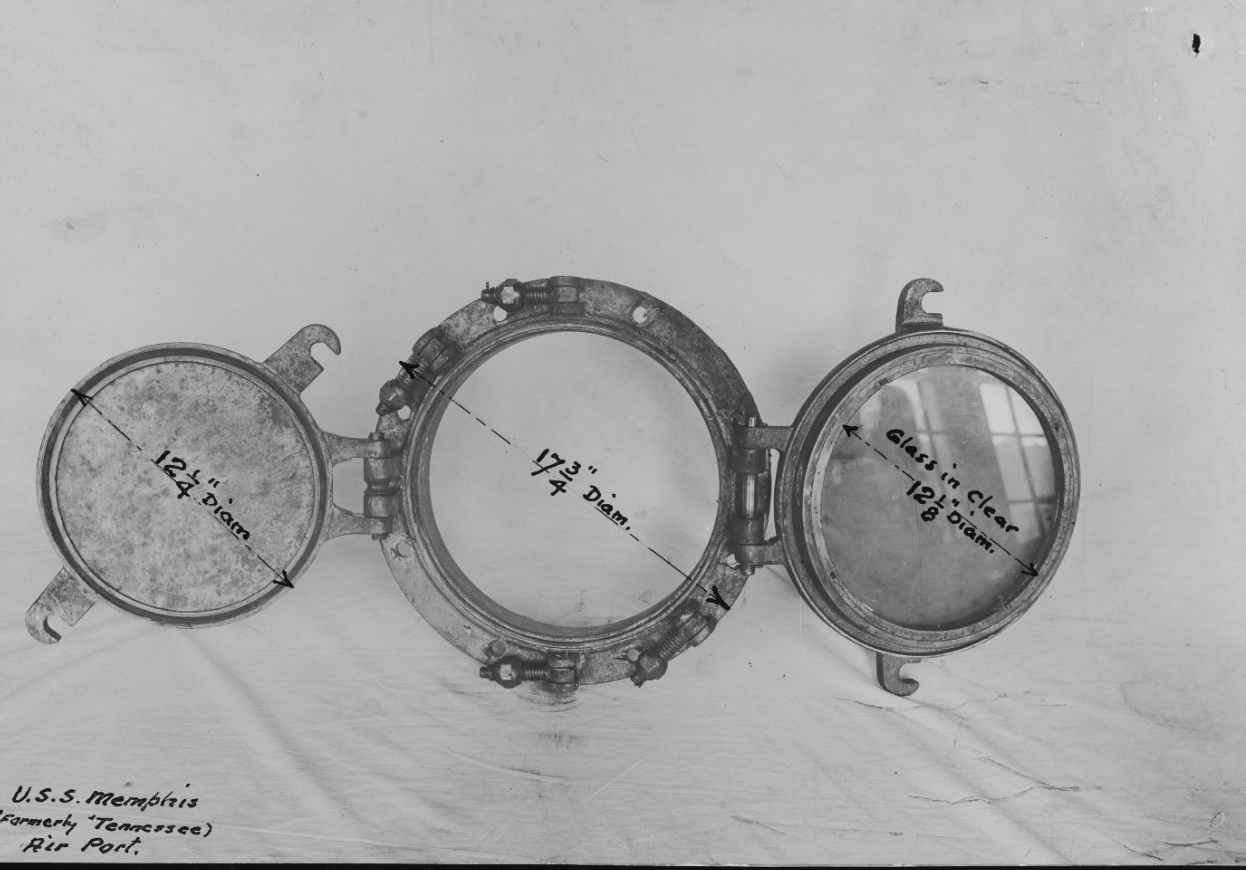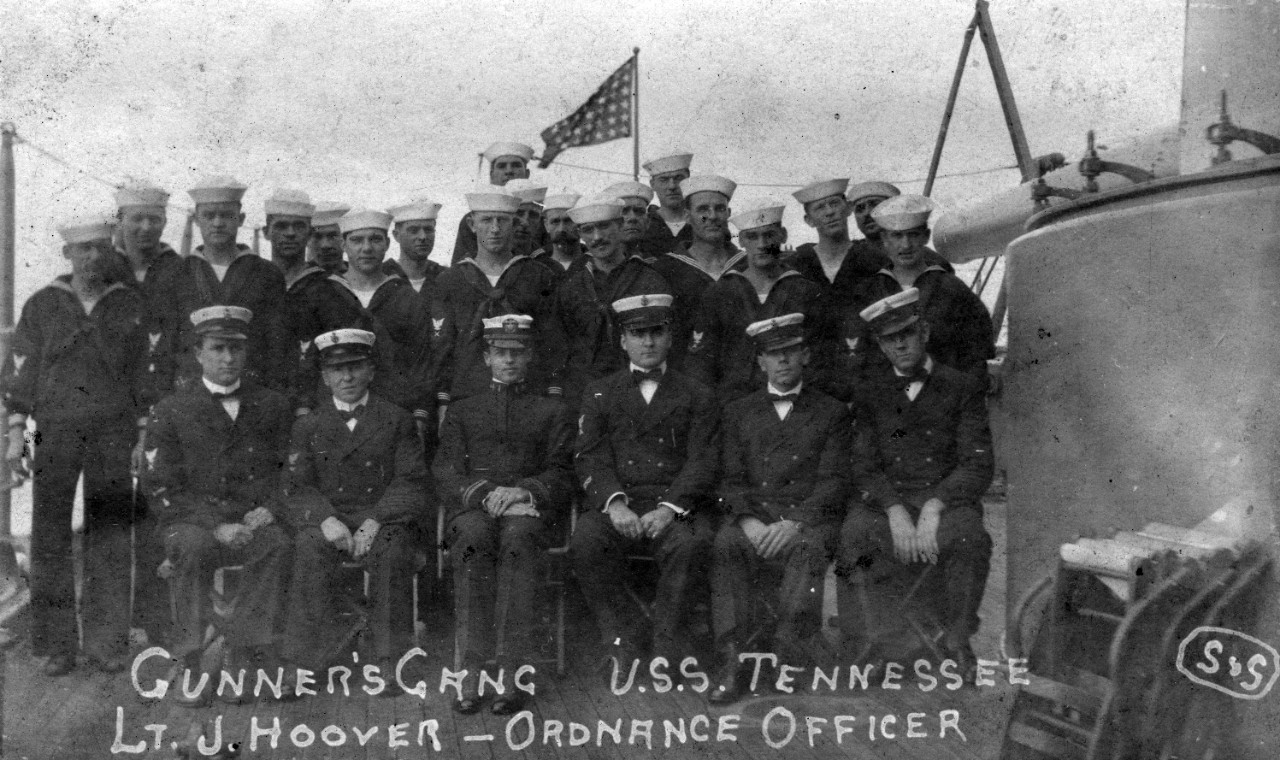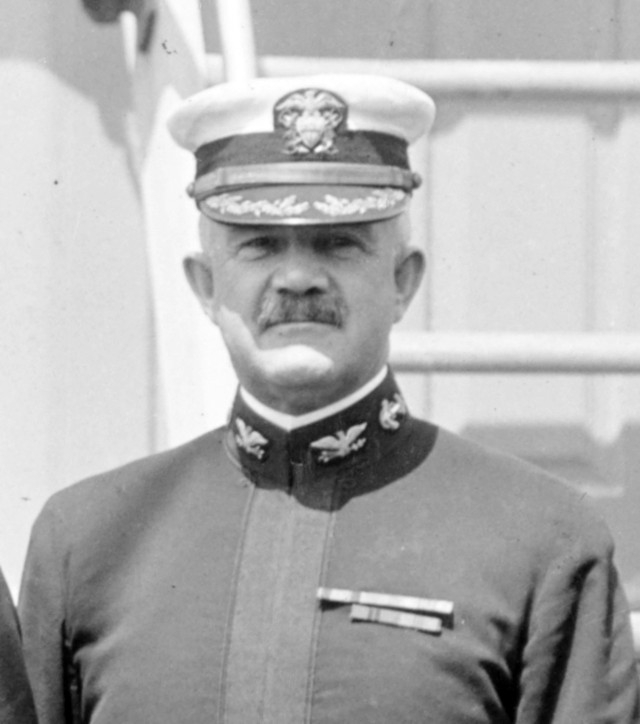Armored Cruiser Memphis
On 17 July 1906, armored cruiser Tennessee—renamed Memphis in May 1916—was commissioned at the Philadelphia Navy Yard and on her maiden cruise later that year, served as an escort for Louisiana (Battleship No. 19) that had embarked President Theodore Roosevelt for a cruise to check on the status of work constructing the Panama Canal. Both ships returned to Hampton Roads, Virginia, on 26 November, and after repairs, Tennessee made way for the Jamestown Exposition, held off Sewell’s Point, to commemorate the tri-centennial of the founding of the first English settlement in America. After several cruises in the Atlantic, Tennessee was reassigned to the Pacific Fleet in late 1907. Tennessee operated in Pacific waters for several years, before she was reassigned again as the flagship for the Fifth Division of the Atlantic Fleet. Tennessee operated in the Atlantic until joining the Reserve Fleet in Philadelphia on 23 October 1913, where she remained inactive until the outbreak of World War I. Over the course of the “Great War,” Tennessee, among other missions, was instrumental in evacuating thousands of refugees from Jaffa, Palestine, and helped quell ongoing violence in Haiti.
After the Naval Act of 1916 was passed, President Woodrow Wilson’s request to “build a navy equal to any other in the world,” included ten additional battleships, one of which (Battleship No. 43) was slated to be named Tennessee. Consequently, on 25 May, Tennessee was renamed Memphis, honoring the city in Tennessee, so that the name of the state could be reassigned to one of the new ships. About a month later, Captain Edward L. Beach Sr. took command of Memphis, and was underway for the West Indies, arriving at Santa Domingo on 23 July for a peacekeeping patrol off the rebellion torn republic.
On the afternoon of 29 August, Memphis and pre–Spanish American War gunboat Castine were at anchor when at 3:30 p.m. a series of very close tsunami-like waves inundated the Dominican Republic harbor, driving Memphis ashore and almost wrecking Castine. The waves were so steep, reportedly 75 feet high, that they flowed over the armored cruiser, including the bridge and even the stacks, and repeatedly battered the warship into the harbor bottom. The massive waves swamped Memphis as the Sailors in the engine rooms and fire rooms tried in vain to power up the steam engines to get the ship underway. Castine survived the storm by steaming out to sea to weather the storm. In less than two hours, Memphis was wrecked. Above the waterline the ship didn’t appear to be damaged, but below the surface of the water the ship’s hull was crushed, conforming to the rocks and coral on which she lay on the shore of Santo Domingo. The lower decks were flooded almost to the waterline, leaving Memphis stranded in shallow water.
The crew of Memphis battled to save the ship, but the sea’s abrupt destructive action proved to be too much. Along with the loss of the ship, 43 Sailors lost their lives and many more were wounded. Three Sailors received the Medal of Honor for their heroic actions on that day—Commander Claud Ashton Jones, Chief Machinist’s Mate George William Rud (posthumously), and Machinist Charles H. Willey.
The U.S. Navy conducted three inquiries to investigate the tragedy. All three courts were conducted in the first weeks of September 1916. The significant findings from the inquires included:
- Between 4:20–4:30 p.m., the heavy rolling of Memphis caused water spray to enter the stacks, hampering attempts to power up the engines to get underway.
- There had been a tropical disturbance, which passed south of Santo Domingo during the night before the tragedy. The disturbance produced no wind or other markers of severe weather, but “produced the heavy swells, which coming in from the deep water to the shallow water of Santo Domingo City anchorage, caused heavy seas that eventually dragged and wrecked Memphis.”
- The captain of the ship should have given the order to raise steam to power the engines earlier; anchored Memphis in a safer anchorage; and taken steps to save the ship and recognize the emergency sooner.
The wreck of Memphis remained on the shore of Santo Domingo for 21 years until 1937, when sufficient ship breaking capability became available to salvage the ship.
*****
Sources
Captain Edward L. Beach Jr. The Wreck of the Memphis. Canada: Holt, Rinehart and Winston of Canada, Ltd., 1966. (Quoted material from p281.)
Representative Steve Cohen (D-TN). House Resolution 306: Recognizing the centennial of the wreck of the USS Memphis and encouraging the commemoration of such wreck with appropriate events and activities. June 10, 2015. https://www.congress.gov/bill/114th-congress/house-resolution/306.
Suggested Reading
Selected Imagery
Fine screen halftone reproduction of a photograph of Tennessee (Armored Cruiser No. 10) ready for launching at the Cramp Shipyard, Philadelphia, Pennsylvania, 3 December 1904. A portrait of her sponsor, Miss Annie K. Frazier, was vignetted into the view. U.S. Naval History and Heritage Command photograph, NH 99945.
View of the deck of Memphis (Armored Cruiser No. 10) looking forward on the port side at Santo Domingo, Dominican Republic, August 1917. She had been cast ashore by a tidal wave on 29 August 1916, and by this time had been largely stripped of guns, supplies, and equipment. U.S. Naval History and Heritage Command photograph, NH 49914.
Memphis (Armored Cruiser No. 10) wrecked at Santo Domingo, Dominican Republic, where she was thrown ashore by tidal waves on the afternoon of 29 August 1916. This view probably was taken during the late afternoon or early evening, as Memphis was being abandoned. Note water streaming from the ship's foredeck, and violent wave action around her bow. U.S. Naval History and Heritage Command photograph, NH 46224.
Memphis (Armored Cruiser No. 10) wrecked at Santo Domingo, Dominican Republic, in February 1929. She had been stranded by a tidal wave on 29 August 1916. Though she had been sold years before this photograph was taken, not much progress had been made in breaking her up. U.S. Naval History and Heritage Command photograph, NH 59922.

